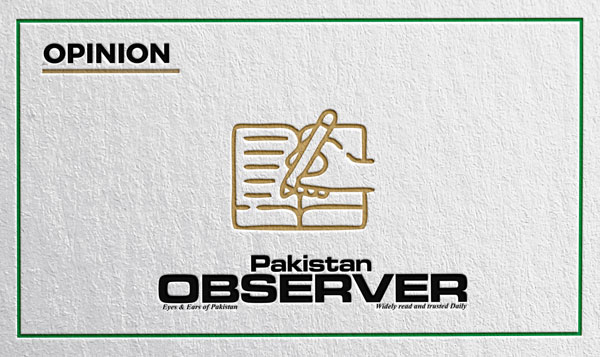Articles and letters may be edited for the purposes of clarity and space.
Pakistan’s youth migration
In the prevailing circumstances in Pakistan, particularly among the youth, the quest for survival has driven many to consider fleeing the country and establishing themselves abroad. The scale of this migration is striking; in 2021, approximately 225,000 Pakistanis opted for this path, yet this figure surged to a staggering 765,000 in the subsequent year. Notably, the 2022 exodus encompassed a substantial portion of highly educated professionals, totalling 92,000 individuals, spanning fields such as medicine, engineering, information technology and accountancy.
This escalating trend rings alarm bells, considering that the youth represents the cornerstone of a nation’s future. It is crucial, however, to refrain from assigning blame to these individuals, recognizing that their choices are often responses to the pressing and undeniable crises within the country. Nevertheless, as responsible citizens, there is an imperative need to channel our collective efforts towards seeking and implementing solutions for the betterment of our homeland, rather than resorting to a mass exodus.
The situational challenges demand our active engagement and collaborative endeavours to address the root causes, fostering an environment conducive to progress and prosperity for the generations to come.
HAJIRA BATOOL
Islamabad
Balancing Pakistan
In the dynamic landscape of South Asia, Pakistan’s economy faces a complex array of challenges and opportunities. As of early 2023, the nation grapples with uneven GDP growth, fluctuating inflation rates and notable unemployment issues, particularly among its burgeoning youth population.
Central to Pakistan’s economy is the agricultural sector, yet it struggles with water scarcity and outdated practices. The manufacturing and service sectors, particularly textiles and IT, show potential for growth but require significant investment and modernization.
Externally, global economic trends, trade relationships with key partners like China and the US and reliance on international loans, notably from the IMF, heavily influence Pakistan’s economic stability. These factors, coupled with internal political transition and infrastructural challenges, create a complex economic scenario.
The energy sector crisis, fiscal deficits and debt management are pressing issues. Addressing these concerns alongside fostering sectoral growth is a delicate balancing act for the government. Policies focusing on economic stabilization, debt management and foreign investment are pivotal yet challenging to implement effectively.
Looking ahead, strategic planning and coherent policy-making, emphasizing sustainable development, economic diversification and investment in human capital, are crucial for Pakistan’s economic future. The country’s location and international relations further add layers to its economic decisions and opportunities.
In summary, Pakistan’s economy stands at a crossroads, with the potential for growth tempered by significant challenges. Navigating this landscape requires a balanced and nuanced approach, ensuring long-term stability and prosperity for its population.
ZOOHA INDHER
Sukkur
Water scarcity in Pakistan
I am writing to express my concern that the Water Scarcity in Pakistan has reached alarming levels, affecting millions of lives across the country. With depleting water resources, prolonged droughts and inadequate infrastructure, the situation demands immediate attention.
It is imperative for the government to implement comprehensive water management strategies, invest in effective irrigation systems and promote water conservation practices at both individual and industrial levels.
Additionally, public awareness initiatives can significantly contribute to fostering a sense of responsibility and understanding the significance of water conservation. Collaborative efforts from policymakers, communities and the private sector are essential to secure a sustainable water future for Pakistan.
HOORAIN WAKIL
Rawalpindi
Teaching dilemma
In government schools, the absence of essential skills among educators is a silent catastrophe, profoundly affecting students. Many lack the basic abilities crucial for teaching—reading, writing, listening and learning.
Teachers should be the catalysts for students’ growth, empowering them with vital skills. Yet, a concerning reality persists: countless students are bound to depend solely on their teachers, unable to foster independent learning. This reliance shackles their potential for self-reliance.
This is a clarion call for urgent action. The government must swiftly equip specific schools with proficient educators. The future of countless students hangs in the balance.
ABDUL RAZIQ
Karachi










